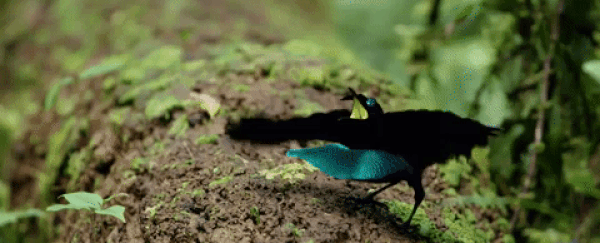Ornithologists have classified the Vogelkop superb bird-of-paradise as its own species after recognizing differences in two similar-looking kinds of the birds.
These birds-of-paradise are famous for evolving super-black feathers that absorb nearly all light, and their haunting courtship dances (see video below). But now scientists have discovered there are actually two species.
For years, people mistook the Vogelkop superb bird-of-paradise for the wider spread and closely related superb bird-of-paradise.
"After you see what the Vogelkop form looks like and acts like in the wild, there's little room for doubt that it is a separate species," says Ed Scholes, evolutionary biologist with the Cornell University Lab of Ornithology's Birds-of-Paradise Project.
"The courtship dance is different. The vocalizations are different. The females look different. Even the shape of the displaying male is different."
On the left below is the widespread superb bird-of-paradise, with its famous black smiley face mating display. On the right is the newly identified Vogelkop superb bird-of-paradise, which looks more like a frown face.
 (Tim Laman & Ed Scholes/Macaulay Library)
(Tim Laman & Ed Scholes/Macaulay Library)
Both birds are endemic to New Guinea, but the Vogelkop superb bird-of-paradise is found only in the island's far-western Bird's Head, or Vogelkop, region.
Researchers renamed the more widespread superb bird-of-paradise - known for its bouncy "smiley face" dance routine - the "greater superb bird-of-paradise."
Now, for the first time, newly released audiovisuals support the claim that the Vogelkop superb bird-of-paradise is its own distinct species.
Scholes and Timothy Laman, ornithologist and wildlife photojournalist at Harvard University's Museum of Comparative Zoology documented the audiovisual data, which appear in the journal PeerJ.
This video footage reveals that when expanded for courtship display, the Vogelkop male's raised cape creates a completely different appearance - crescent-shaped with pointed tips rather than the oval shape of the widespread form of the species.
The way the Vogelkop male dances for the female is also is distinctive, his steps being smooth instead of bouncy.
The Cornell Lab's Birds-of-Paradise Project is a research and education initiative to document, interpret and protect birds-of-paradise, their native environments and other biodiversity of New Guinea, one of the largest remaining tropical wildernesses on the planet.
Source: Cornell University
This article was first published on Futurity. Read the original article.
